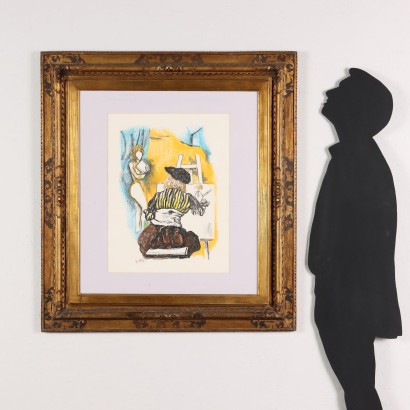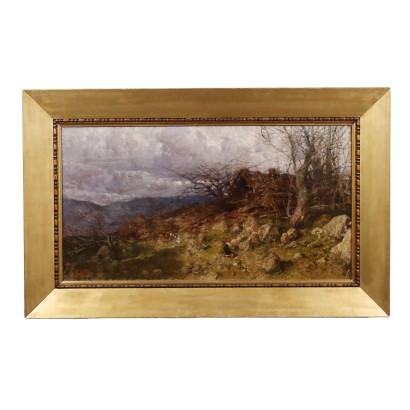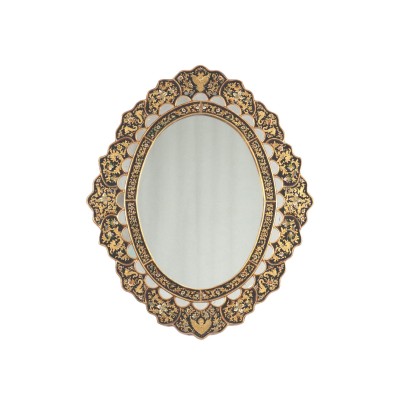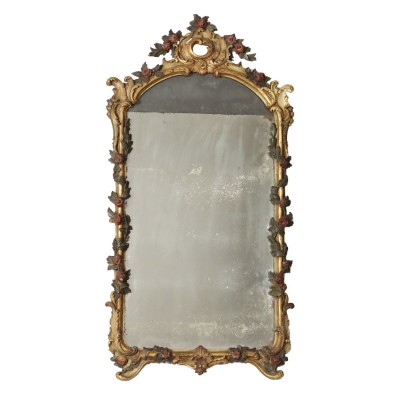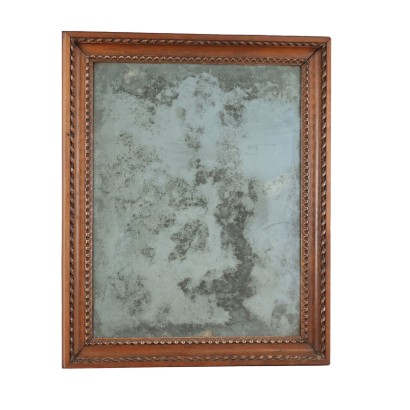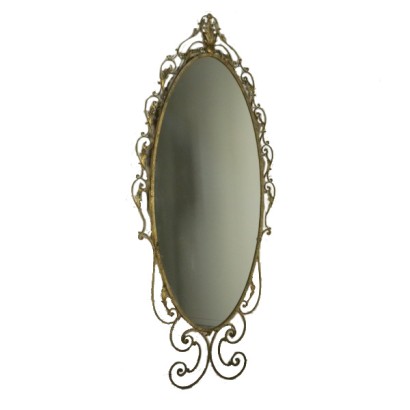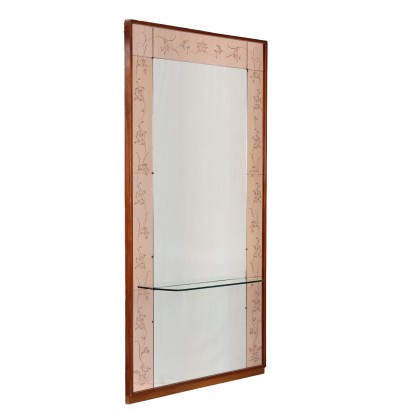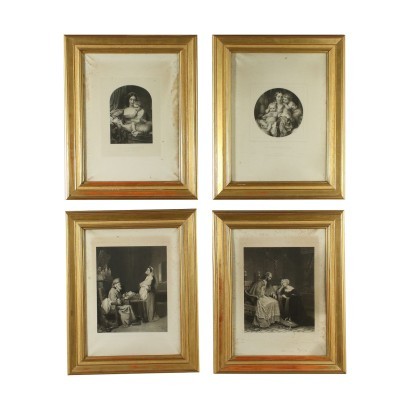R. Guttuso Pastels on Paper Italy XX Century - Tribute to Jan Vermeer
Features
Artist: Renato Guttuso (1911-1987)
Artwork title: Omaggio a Jan Vermeer
Age: 20th Century / 1901 - 2000
Subject: Scene with Figures
Origin: Italy
Artistic technique: Drawing
Technical specification: Pastel
Description : Omaggio a Jan Vermeer
Pastels on paper. Signed lower left. This is probably the original work created by the master Guttuso from which the lithography of the same name was derived, belonging to the series, published in 1980, called "Colloquio con i maestri", including eight specimens, each of which pay homage to a great master of painting. In this case it is the "Homage to Jan Vermeer", the great Flemish painter portrayed in his atelier, with his back to the easel, while he paints a model. The work is presented in a style frame with a "window" opening.
Product Condition:
Product in very good condition which may show slight traces of wear; it may have undergone restoration work carried out by an expert.
Frame Size (cm):
Height: 107
Width: 97
Depth: 7
Artwork dimensions (cm):
Height: 60
Width: 46
Additional Information
Artist: Renato Guttuso (1911-1987)
Born in Bagheria in Sicily in 1911, Renato Guttuso was one of the most important Italian artists of the twentieth century, and his name is among those that have marked the history of Italian art in the second half of the twentieth century. He discovers art through his father, also a painter, and since he was a child he devoted himself to landscape painting, portraying the views and mountainous reliefs of his land, from which he will be inspired throughout his artistic career. He first studied in Palermo, then moved to Rome in the 1930s and finally arrived in Milan in 1932; in these years he met many prominent artists and writers and above all formed his anti-fascist political conscience. He was a leading exponent of Corrente, the artistic movement whose name derives from Corrente di vita giovanile, a magazine born in 1938 in Milan, based on an idea by the painter Ernesto Treccani (Milan, 1920 - 2009); the objective of the movement was to reconcile political life with an idea of independent art, free from the power of the fascist regime, in opposition to the twentieth century group, considered close to fascism. Also in 1938 the group's manifesto was published, but the experience was already partially concluded in 1943, with the suppression of the magazine by the fascist regime. In 1945, to escape the fascist repression, Guttuso escaped to Paris, where he met Pablo Picasso. After the war, Guttuso's art will acquire an ever greater political weight, becoming one of the most interesting experiences of his time. He joined the Fronte Nuovo delle Arti artistic group (1946-48), to give a voice to all the artists who, due to fascism, were unable to freely exercise their art in Italy. Guttuso travels a lot both in Italy and abroad, obtaining recognition, important collaborations for theatrical sets, Italian and international magazines, as well as an invitation to exhibit several times at the Venice Biennale. Since 1965 he has lived and worked in Rome at Palazzo del Grillo, without ever abandoning his political career (his communist faith had never failed: in fact he had already joined the underground Communist Party of Italy in 1940), culminating with the election a senator in the PCI, the Italian Communist Party, in 1976. On 18 January 1987 he died in Rome at the age of seventy-five.
Age: 20th Century / 1901 - 2000
20th Century / 1901 - 2000
Subject: Scene with Figures
Artistic technique: Drawing
Il disegno è il processo di tracciare segni su una superficie tramite l'applicazione di una pressione o il trascinamento di un apposito strumento sulla superficie. Gli strumenti sono: matite in grafite o colorate, penna, pennelli fini con inchiostro, pastelli a cera o carboncini; i supporti tradizionali più frequenti sono carta, cartoncino, tavola, muro, tela, rame, vetro.
Technical specification: Pastel




